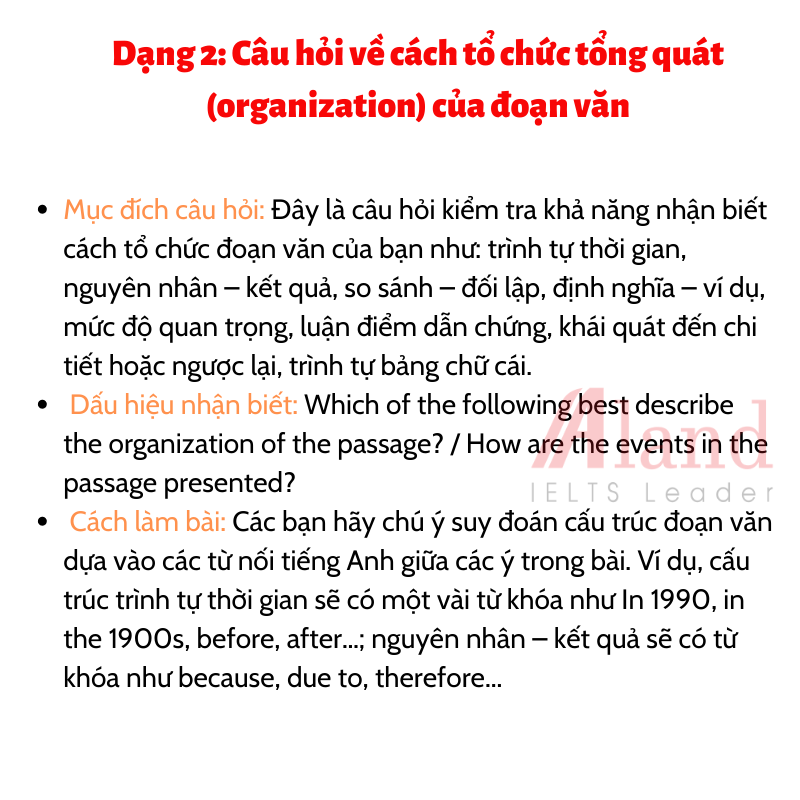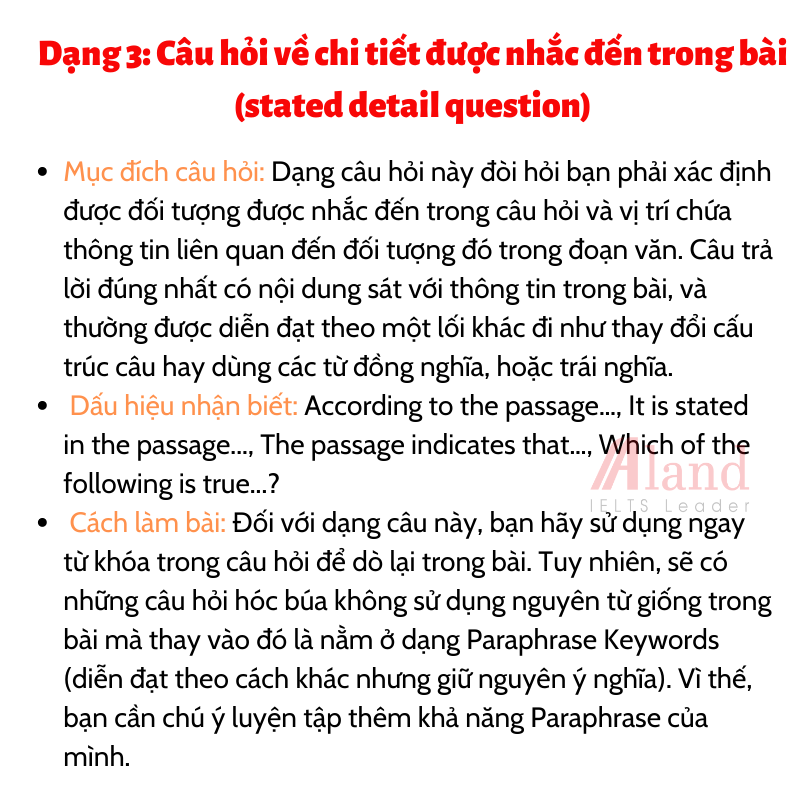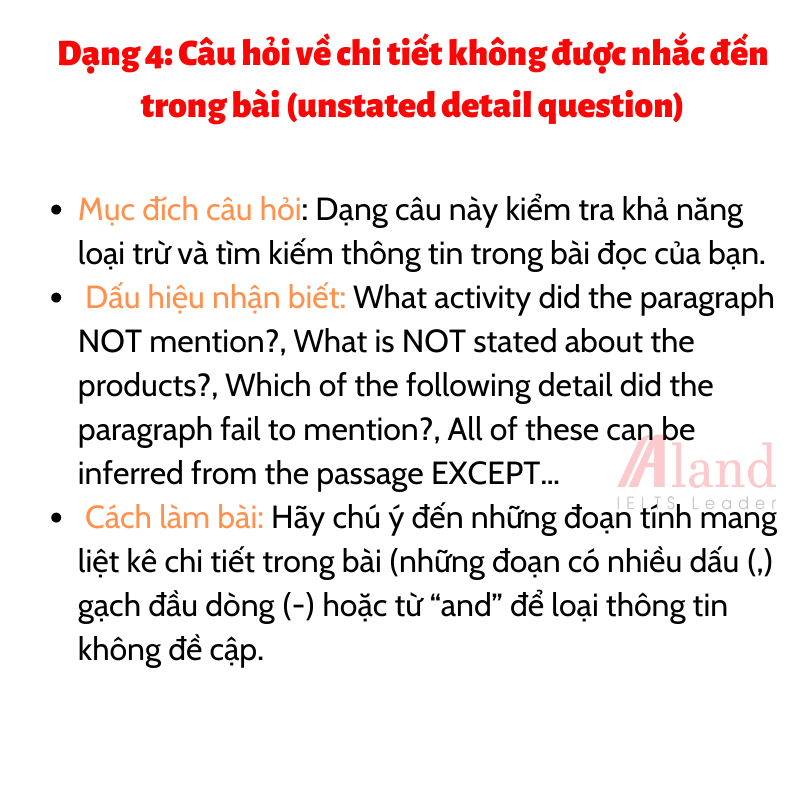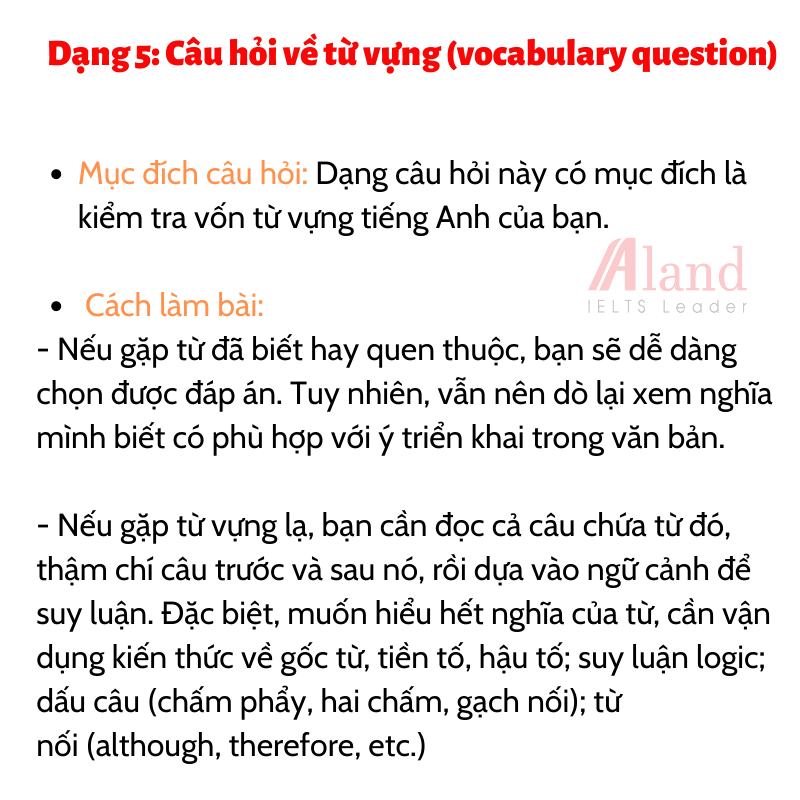Đọc hiểu được nhận định là một trong những phần thi khó nhất trong đề thi đại học môn tiếng Anh. Tuy nhiên, đây cũng là phần thi mà chúng ta hoàn toàn có thể chinh phục được thông qua việc luyện tập.
Đang xem: Các dạng bài đọc hiểu tiếng anh
Thông thường, các câu hỏi trong bài đọc hiểu được chia làm 3 nhóm câu hỏi chính với 7 dạng bài tập cụ thể. Mỗi dạng sẽ có dấu hiệu nhận biết và cách làm bài khác nhau. Cùng roosam.com tìm hiểu cách làm bài đọc hiểu tiếng Anh thi đại học cho những loại bài này!
Nhóm 1 – Câu hỏi tổng quát
Đối với nhóm câu hỏi này, lời khuyên là bạn đừng quá đi sâu vào chi tiết hay từ mới mà chỉ cần chú ý đến cấu trúc và những từ khóa (key words) trong bài. Trong nhóm này có các dạng bài tập như sau:
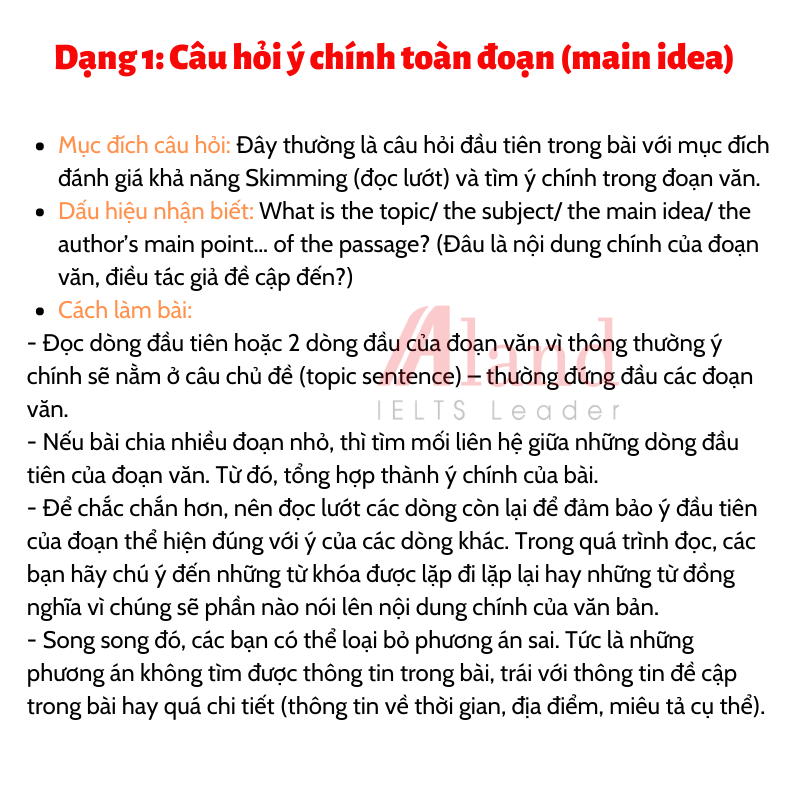
Nhóm 2 – Câu hỏi chi tiết trong đoạn văn
Nhóm câu hỏi này thường chiếm đến 50% số lượng các câu trong phần đọc hiểu, tập trung vào các thông tin cụ thể có trong bài viết như thời gian, địa điểm, nguyên nhân, kết quả… Thông thường, trình tự câu hỏi sẽ giống với trình tự nội dung trong bài đọc.
Nhóm 3 – Câu hỏi suy luận
BÀI TẬP
Exercise 1. Choose from A, B, C, or D the one that best answers each of the questions in the following passage.
Several hundred million years ago, plants similar to modern ferns covered vast stretches of the land. Some were as large as trees, with giant fronds bunched at the top of trunks as straight as pillars. Others were the size of bushes and formed thickets of undergrowth. Still others lived in the shade of giant club mosses and horsetails along the edges of swampy lagoons where giant amphibians swam.
A great number of these plants were true ferns, reproducing themselves without fruits or seeds. Others had only the appearance of ferns. Their leaves had organs of sexual reproduction and produced seeds. Although their “flowers” did not have corollas, these false ferns (today completely extinct) ushered in the era of flowering plants. Traces of these floras of the earliest times have been preserved in the form of fossils. Such traces are most commonly found in shale and sandstone rocks wedged between coal beds.
Today only tropical forests bear living proof of the ancient greatness of ferns. The species that grow there are no longer those of the Carboniferous period, but their variety and vast numbers, and the great size of some, remind us of the time when ferns ruled the plant kingdom.
1. What does the passage mainly discuss?
A. Plant reproduction B. How to locate fossils
C. An ancient form of plant life D. Tropical plant life
2. The word “Others” refers to_________.
A. plants B. pillars C. trees D. fronds
3. Which of the following is NOT mentioned as a characteristic of the plants described in the passage?
A. They once spread over large areas of land.
B. They varied greatly in size.
C. They coexisted with amphibians, mosses, and horsetails.
D. They clung to tree trunks and bushes for support.
4. The word “true” is closest in meaning to which of the following?
A. accurate B. genuine C. straight D. dependable
5. The author states that fossils of early plant life are usually found in rocks located between deposits of_______.
Xem thêm: RạP ChiếU Phim QuốC Gia Giảm 20% Thanh Toán Quét Vnpay, Trung Tâm Chiếu Phim Quốc Gia
A. coal B. shale C. sandstone D. corollas
|
→ Nhận full tài liệu bài tập đọc hiểu: TẠI ĐÂY |
Phần đọc hiểu chiếm đến 13 câu hỏi trong phần bài thi THPT, vậy nên đội ngũ roosam.com hy vọng bài viết này sẽ giúp bạn có cái nhìn tổng quát về các dạng trong phần đọc hiểu để khi làm đề, bạn sẽ nhìn ra được bài đó thuộc dạng nào.
